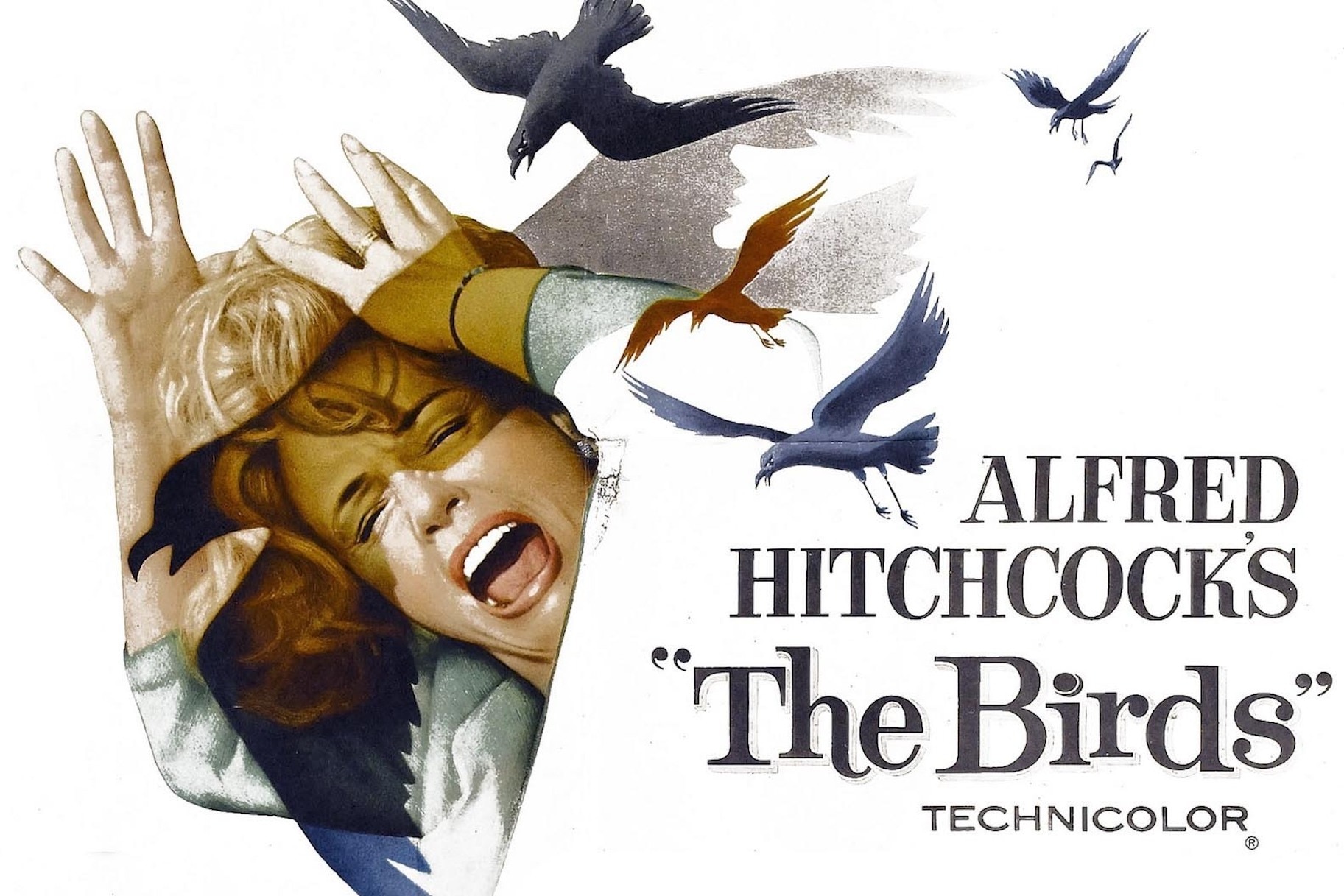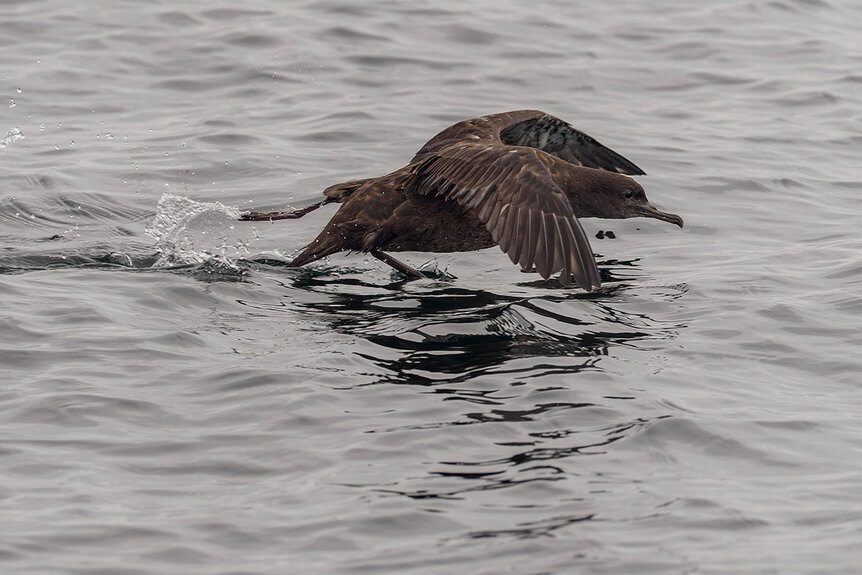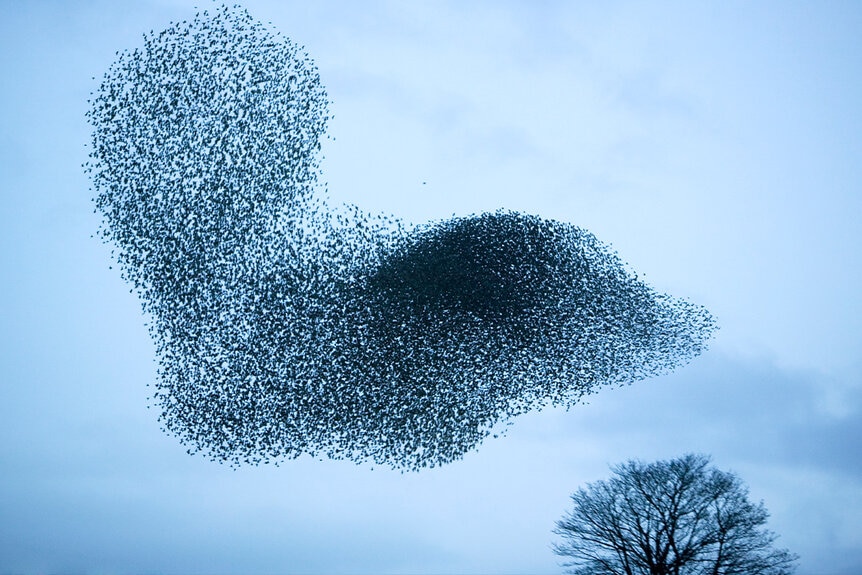Create a free profile to get unlimited access to exclusive videos, sweepstakes, and more!
When birds attack, the science behind 'The Birds'
It was all just a big misunderstanding.

Sixty years ago this week, Alfred Hitchcock’s horror classic The Birds (streaming now on Peacock!) was released. The story of how the movie came to be is nearly as weird as the events we see onscreen. The screenplay, written by Evan Hunter, was adapted both from the 1952 Daphne du Maurier horror story of the same name and the real life bird attack of 1961.
RELATED: ‘The Birds’ is terrifying because it doesn’t explain anything
Du Maurier’s story, published in her collection The Apple Tree: A Short Novel and Several Long Stories, sees a farmhand and his family attacked by a vicious flock of murderous birds. By the time readers turn the last page, they’ve learned that the attack isn’t isolated to this one lone farmhouse. Certain of the details differ between book and movie, but you can see the hollow bones of the story there. Then the universe stepped in to give Hitchcock and crew an added boost of horrific inspiration.
WHEN BIRDS ATTACKED
The August 18, 1961 issue of the Santa Cruz Sentinel had the following headline: “Seabird Invasion Hits Coastal Homes.” The story, written by Wally Trabing, tells of what appears to be a coordinated attack by thousands of sooty shearwaters, a type of seabird, on two coastal towns, earlier that morning.
Trabing wrote, “Residents, especially in the Pleasure Point and Capitola area were awakened about 3 a.m. today by the rain of birds, slamming against their homes. Dead and stunned birds littered the streets and roads in the foggy, early dawn. Startled by the invasion, residents rushed out on their lawns with flashlights, then rushed back inside, as the birds flew toward their light.”
Reportedly, the paper received a phone call from Hitchcock himself, after the story ran, requesting a copy of the issue. Two years later, The Birds hit theaters, set in the town of Bodega Bay, less than 150 miles up the coast from where the real bird attack occurred. Whether The Birds is art imitating life or the other way around is up for debate.
At the time, there was some justifiable speculation as to the cause of thousands of birds plowing headlong into cars, homes, and people on their way to a swift death. The fog in the air led some to wonder if they were simply lost, unable to see where they were going through the haze. But birds, especially seabirds, are no stranger to poor visibility. If that were the cause, we should be spending a lot more on bird defense insurance. Others reported birds “heavy with sardines” and regurgitating blood. That the birds might have been sick, for one reason or another, wasn’t really investigated until decades later.
HAPLESS, FLAPLESS, AND DEAD
In 2010, two scientists, Sibel Bargu and Ana Garcia, found toxic algae in regions of the open ocean. Those algal blooms included a diatom called Pseudo-nitzschia which produces a nasty little neurotoxin called domoic acid (DA). Pseudo-nitzschia is also commonly found in coastal areas where it can more easily make its way into the food chain.
Prior research suggested one possible way in which domoic acid could make its way into the food web is via krill. When Pseudo-nitzschia gathers large enough groups, they can produce quite a lot of DA. Then they get eaten by plankton or krill, who get eaten by small fish, who get eaten by bigger fish, who get eaten by seals or birds. By the time the toxin gets that far up the food chain, the concentrations can be high enough to be deadly in unsuspecting predators.
In birds and mammals, DA causes confusion and disorientation. In severe cases, it can cause seizures, coma, and death. Researchers wanted to know how these toxic algal blooms might be impacting the wider ecosystem. So, they looked back through stored phytoplankton samples over the last several decades, to see if they could find the presence of DA in the food web. Spikes appeared at multiple points, several of which corresponded to previously unexplained animal deaths. Suddenly, the toxic algae explanation started looking pretty solid, but they needed a smoking gun, as it were.
RELATED: 'Psycho' vs 'The Birds': Here's how these two Hitchcock horror classics stack up
They found it. Phytoplankton samples from near Pleasure Point and Capitola, and from the right time period, were swimming in domoic acid. Tests revealed that 79% of plankton in the sample was contaminated with toxic algae. “I am pretty convinced that the birds were poisoned,” Bargu said, at the time.
The question then, is why the 1961 event was so much more dramatic than the smattering of birds and sealions which have seemingly been impacted since. We’ll probably never know for sure, but it’s likely the severity of the 1961 “attack” had more to do with the type of animal impacted than anything else.
The sooty shearwater are medium-sized seabirds, like a dirty seagull, who embark upon a yearly migration tens of thousands of miles long. It is estimated that up to a million of them visit the area each year, their flocks so vast that they look like clouds of smoke on the horizon, according to the Monterey Bay Aquarium.
There is strength in numbers, and that’s true whether you’re embarking on one of the world’s longest annual migrations or you’re waging a futile war against humanity. In flocks, the motion of birds is defined by a few key characteristics. You want to stay close to your neighbor, you want not to bump into your neighbor, and you want to mirror the motions of your neighbor as closely as you can. The result of these rules, when you get a few thousand birds to do it, is the mesmerizing wave-like motion of birds flocking. Those are the rules that get a sooty shearwater safely from one point of their globe-spanning flight path to the next.
Those are also the rules that will get a lot of birds dead all at once, under the right (or wrong) conditions. Thousands upon thousands of birds ate together, flew together, and lived together. Because of that, they also died together. Unaware that the area had been infiltrated by toxic algae and that the toxin had made its way into small animals and fish, the birds happily gorged themselves in preparation for the next long leg of their journey.
Sufficiently poisoned, they took to the air. Confused, disoriented, and ill, they did what they had always done. They stuck together, right to the end. The birds in The Birds aren’t the villains. They are the victims, and we are unlucky side characters in their horror story.
The Birds is streaming right now, on Peacock!




























